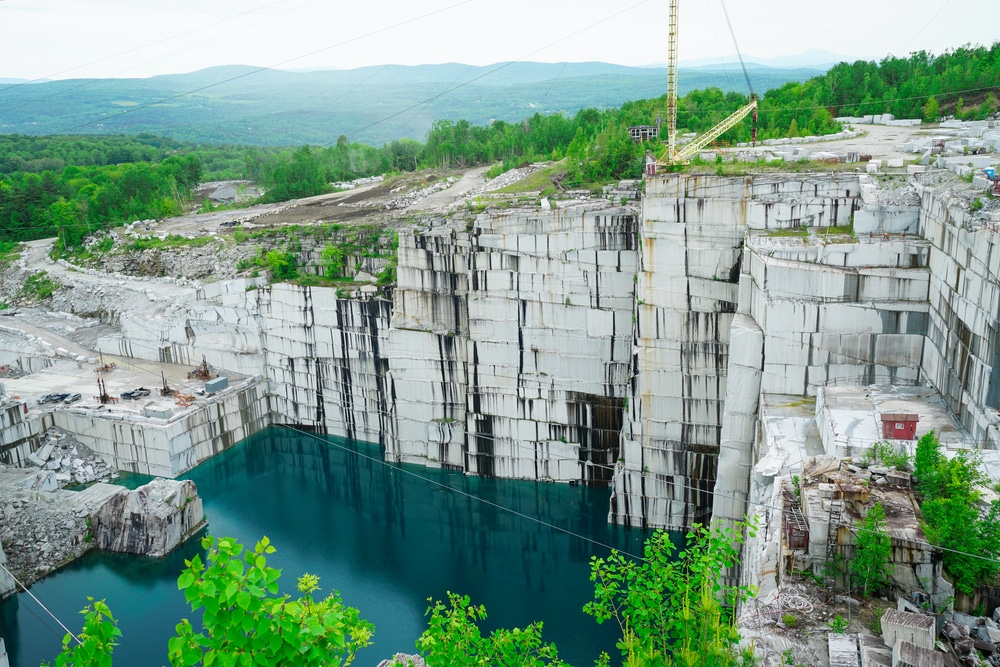Uncovering the Elegance of Granite Quarry in South Africa Marvels
Uncovering the Elegance of Granite Quarry in South Africa Marvels
Blog Article
Introducing the Mysteries of Granite Quarrying: Where Strength and Sophistication Meet
The globe of granite quarrying is a realm where the raw stamina of nature merges with human artistry to produce frameworks that stand the examination of time with an air of elegance. From the depths of quarries to the careful sprucing up in workshops, the process of transforming granite into building wonders is a complex dance of custom and advancement. As we peer right into the midsts of this ancient craft, we begin to discover the concealed details that form the very essence of our built atmosphere.
The Beginnings of Granite Quarrying
In the record of building background, the beginnings of granite quarrying are shrouded in a tapestry of old workmanship and geological wonders. Going back to old Egypt and Mesopotamia, the removal of granite from quarries noted the start of a trip that would at some point lead to the creation of some of the world's most iconic structures.
Granite quarrying's roots can be traced to the experienced artisans who recognized the stone's durability and aesthetic allure. Via a mix of primitive tools and sheer determination, these early quarry workers unearthed granite blocks that would certainly come to be the foundation of people.
As people progressed, so did the methods of quarrying granite. The Romans, renowned for their engineering prowess, developed innovative approaches for drawing out granite to build monuments, holy places, and roadways that stood the test of time.
The legacy of these old quarrying techniques continues to shape modern-day style, with granite staying a symbol of strength and style in building jobs around the globe. (granite quarries in south africa)
Devices of the Quarrying Trade
The evolution of granite quarrying strategies from ancient civilizations to modern-day times highlights the vital role played by the devices of the quarrying sell shaping the sector's methods. In old times, quarrying tools were basic, often being composed of chisels, hammers, and wedges made from products like bronze or iron. These tools called for considerable workforce and time to essence granite blocks from quarries.

Additionally, the introduction of pneumatic devices and high-powered equipment has actually dramatically reduced the physical labor required in quarrying procedures, boosting employee security and performance. As the quarrying industry here remains to innovate, the tools of the trade continue to be at the leading edge of driving progress and shaping the future of granite extraction.
Extracting Blocks of Granite
Utilizing accuracy machinery and progressed methods, the extraction of granite obstructs from quarries has come to be an advanced process in the contemporary quarrying industry. Regulated blasting strategies are then used to break apart the granite right into workable areas.

Polishing and Ending Up Methods
To achieve a remarkable surface area on home granite blocks, competent craftsmens utilize a series of thorough polishing and finishing strategies. After the initial removal and shaping procedures, the granite blocks undergo a detailed polishing stage to improve their all-natural charm and resilience. One usual method made use of in polishing granite is ruby abrasion, where industrial diamonds are made use of to grind and polish the rock to a smooth finish. This procedure not only produces a lustrous surface yet also makes certain uniformity in shade and texture across the granite block.
Along with polishing, completing strategies are related to further fine-tune the granite's look. These strategies may include flaming, refining, or cleaning, each offering one-of-a-kind appearances and surfaces to match various aesthetic preferences. Flaming, as an example, includes subjecting the granite surface to heats to develop a harsh, textured finish, perfect for exterior applications where slip-resistance is crucial. Developing, on the various other hand, provides a matte finish that is smooth to the touch, ideal for indoor counter tops and flooring. By meticulously picking and applying these brightening and finishing techniques, artisans can change raw granite blocks into splendid items that showcase both toughness and elegance.

Ecological Effect and Sustainability
With the expanding emphasis on environmental consciousness in the market, granite quarrying techniques are increasingly scrutinized for their effect on all-natural sources and lasting sustainability. In addition, the transportation of granite from quarries to processing facilities produces carbon discharges, additionally contributing to ecological destruction.
To mitigate these impacts and guarantee sustainability in granite quarrying, market stakeholders are embracing numerous actions. Applying advanced technologies to reduce energy consumption and water usage, reclaiming quarried land for ecological restoration, and promoting responsible sourcing practices are some strategies being employed. Qualifications such as the Forest Stewardship Council (FSC) and the click Leadership in Energy and Environmental Layout (LEED) aid customers determine environmentally pleasant granite items.
Final Thought
Finally, granite quarrying is a procedure that needs specialized tools and strategies to essence blocks of granite and brighten them to a high level of finish. While the ecological impact of quarrying can be substantial, efforts are being made to boost sustainability methods in the sector. Generally, granite quarrying is a delicate equilibrium in between taking advantage of the strength and sophistication of this natural rock while minimizing its influence on the environment.
Report this page